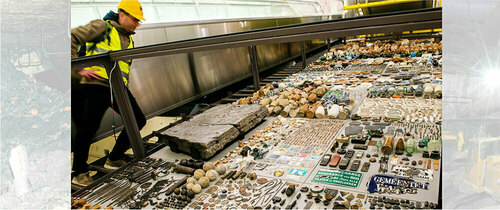How train tunnels beneath Amsterdam revealed a medieval treasure trove
 The archaeological finds exhibited at Rokin station, Amsterdam. Picture from CNN.
The archaeological finds exhibited at Rokin station, Amsterdam. Picture from CNN.From CNN
Building Amsterdam’s North-South metro line was big trouble – a budget-blowing 15-year operation that involved carefully burrowing beneath the foundations of centuries-old architecture.
For archaeologists tasked with sifting through soft mud to preserve any history disturbed by the massive engineering project, it was no easy feat either. Their potentially hazardous work took place inside concrete boxes pressurized to keep out deluges from the Dutch capital’s ubiquitous waterways.
Today, the fruits of their subterranean labors can be seen at Rokin station, one of eight stops on the route and one that doubles up as an impressive underground archaeological museum, with nearly 10,000 artifacts on display.
The station, well worth visiting in its own right, is a testament not only to the rich heritage on which Amsterdam is built, but also to the engineers and archeologists who worked so hard to preserve it.
The fruits of their labor are displayed in two glass cases positioned between the escalators, one case at either end of the station. On any given day, it’s not unusual to find a commuter going up and down the escalators, just to get a better look.
A significant number of these artifacts were found in and around Rokin, a neighborhood that lies along the city’s main Amstel river that was at the heart of Amsterdam as it developed from the 13th century onwards.
Waterways tend to become dumping grounds, accumulating objects over the centuries. The Amstel riverbed around Rokin was no different.
“The sheer mass of material we unearthed during the construction of the North-South line was extraordinary,” says Peter Kranendonk, one of two senior archaeologists leading the excavations during the metro project.
“The construction gave us a unique opportunity to excavate under the city up to a depth of 30 meters,” he adds. The oldest items found were mollusc shells dating to over 115,000 years ago.
Read the full article from CNN
You can also access the database of images, Below the Surface, found in the excavations.